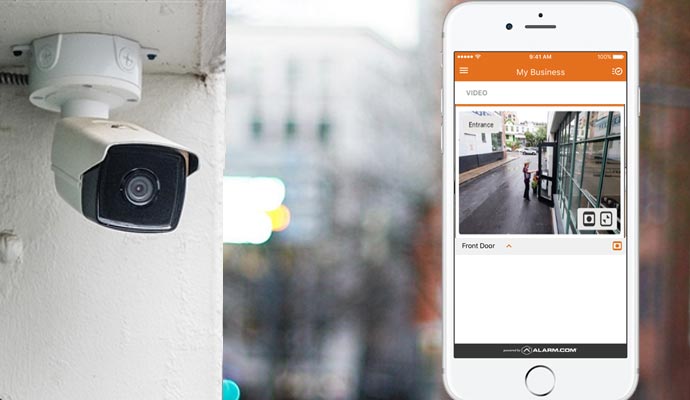To disable a Wi-Fi camera, follow these general steps. First, locate the camera’s power source and unplug it to deactivate the device. If the camera is battery-powered, remove or disconnect the batteries. Next, access the camera’s settings or control panel through its accompanying app or software. Look for options related to Wi-Fi connectivity or remote access and disable them. This will prevent the camera from connecting to the internet or transmitting data.
How WiFi cameras work
Wi-Fi cameras, also known as wireless IP cameras, utilize Wi-Fi technology to transmit video and audio signals over a wireless network. Here’s a simplified explanation of how they work:
- Camera Setup: The Wi-Fi camera is connected to a power source and configured to connect to a local Wi-Fi network. This is typically done through a smartphone app or computer software provided by the camera manufacturer.
- Wireless Connectivity: Once connected to the Wi-Fi network, the camera communicates with the router or access point using Wi-Fi signals. It establishes a connection and obtains an IP address on the network.
- Video Streaming: The camera captures video and audio using its built-in sensors and microphone. It compresses the data and converts it into a digital format. The encoded video and audio stream is then transmitted wirelessly over the Wi-Fi network.
- Remote Access: Users can access the camera’s live video feed and control its settings through a companion app or software. The app communicates with the camera over the internet, allowing users to view the video stream remotely from their smartphones, tablets, or computers.
- Storage and Alerts: Some Wi-Fi cameras offer local storage options, such as an SD card slot, where video recordings can be saved. Additionally, many cameras provide motion detection and alert features, notifying users when motion is detected in the camera’s field of view.
Reasons to Disable WiFi Cameras

There can be various reasons why someone may choose to disable Wi-Fi cameras. Here are a few common reasons:
- Privacy Concerns: Disabling Wi-Fi cameras helps protect privacy, particularly in areas where individuals desire a higher level of personal privacy and want to prevent any potential unauthorized surveillance or invasion of their personal space.
- Security Risks: Wi-Fi cameras can be susceptible to hacking or unauthorized access. By disabling them, users can minimize the risk of their camera feed being accessed or manipulated by malicious individuals.
- Reducing Network Load: Having multiple Wi-Fi cameras connected to a network can put a strain on bandwidth and affect the overall network performance. Disabling unused or unnecessary cameras can help alleviate this issue.
- Temporary Disablement: There may be instances where temporary disablement is necessary, such as during events or gatherings where privacy is valued, or when conducting maintenance or adjustments on the camera system.
- Compliance with Regulations: In certain situations or jurisdictions, there may be specific regulations or legal requirements that necessitate disabling Wi-Fi cameras. This can be applicable in private areas, restricted zones, or locations where privacy laws are strictly enforced.
Identifying and Locating WiFi Cameras
Identifying and locating Wi-Fi cameras can be done using various methods. Here are some approaches:
- Visual Inspection: Conduct a thorough visual inspection of the area where you suspect a Wi-Fi camera might be present. Look for any small, inconspicuous objects that could potentially house a camera, such as smoke detectors, wall clocks, or decorative items.
- Wireless Signal Scanning: Use a Wi-Fi signal scanning app or software on your smartphone or computer to scan for nearby Wi-Fi networks. Look for unfamiliar or suspicious network names that could indicate the presence of a hidden Wi-Fi camera.
- Radio Frequency (RF) Detectors: RF detectors can help identify the presence of wireless signals emitted by Wi-Fi cameras. They can detect radio frequency transmissions that may indicate the presence of surveillance devices.
- Infrared (IR) Scanning: Some Wi-Fi cameras have built-in infrared emitters for night vision. Using an IR scanner or camera, you can sweep the area and look for any infrared light sources that may indicate the presence of hidden cameras.
- Professional Assistance: If you are unable to identify or locate Wi-Fi cameras on your own, consider seeking the help of professional surveillance detection services. These experts employ specialized equipment and techniques to locate hidden cameras.
Disabling WiFi Cameras: Non-Intrusive Methods
Disabling Wi-Fi cameras without physically accessing them can be challenging, but here are some non-intrusive methods you can try:
- Router Settings: Access your Wi-Fi router’s settings by typing its IP address into a web browser. Look for the connected devices list and identify the camera’s IP or MAC address. Use the router’s interface to block or restrict access for that specific device.
- Network Firewall: Configure your network firewall to block outgoing connections from the camera’s IP address or MAC address. This prevents the camera from communicating with external servers or transmitting data over the internet.
- Wi-Fi Network Password Change: If you suspect unauthorized access to your Wi-Fi camera, change your Wi-Fi network password. This will disconnect the camera from the network, preventing it from functioning until the new password is entered.
- Disable Remote Access: Many Wi-Fi cameras have an option to disable remote access in their settings. Access the camera’s configuration interface through its companion app or web interface and disable any remote access features or cloud services.
- Contact Manufacturer Support: Reach out to the camera manufacturer’s customer support for guidance on disabling the camera remotely. They may provide specific instructions or offer additional assistance based on their product’s capabilities.
Disabling WiFi Cameras: Physical Approaches
- Disabling Wi-Fi cameras physically involves taking direct action to deactivate or prevent their operation. Here are some physical approaches to consider:
- Power Source Disconnection: Locate the power source of the Wi-Fi camera and unplug it. This effectively disables the camera by cutting off its power supply. Ensure you identify the correct power source and take necessary safety precautions.
- Battery Removal: If the Wi-Fi camera is battery-powered, open the camera and remove the batteries. This will render the camera inoperable until new batteries are inserted.
- Physical Covering: Covering the camera lens can obstruct its view and prevent it from capturing images or videos. Use materials such as tape, adhesive stickers, or specialized lens covers to physically block the camera’s field of view.
- Camera Removal: If you have the authority to do so, physically remove the Wi-Fi camera from its mounting or installation location. This approach ensures complete disconnection and disables the camera’s functionality.
- Professional Assistance: If you are unsure about the proper methods to physically disable a Wi-Fi camera or if you lack the necessary expertise, consider seeking professional assistance. Security experts or surveillance detection services can help you safely and effectively disable the camera.
Conclusion
In conclusion, Wi-Fi cameras offer convenience and flexibility but may raise concerns regarding privacy and security. Whether you need to disable a Wi-Fi camera due to privacy preferences, security risks, or legal compliance, there are various methods available.
References:
https://sensemother.com/how-to-disable-wifi-camera/

Greetings, I’m Jotham Leopold, the enthusiast and mind behind ExpertDecider.Com. Holding a degree in Management Information Systems from the University of Wisconsin, I ventured into the professional world as an Information Technology Consultant. However, my passion extends beyond the corporate realm. Beyond the algorithms and codes of my IT career, I’ve always been captivated by the sleek world of electronics. This fascination led to the creation of ExpertDecider.Com, a platform where my expertise as an IT Consultant converges with my fervor for the latest gadgets.